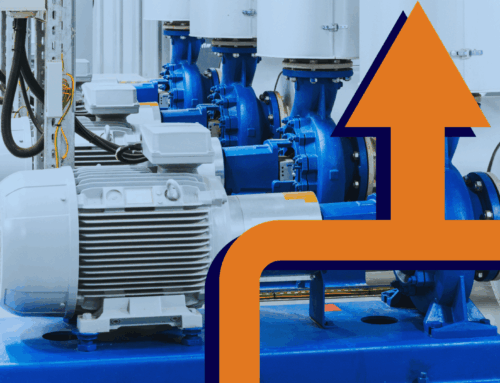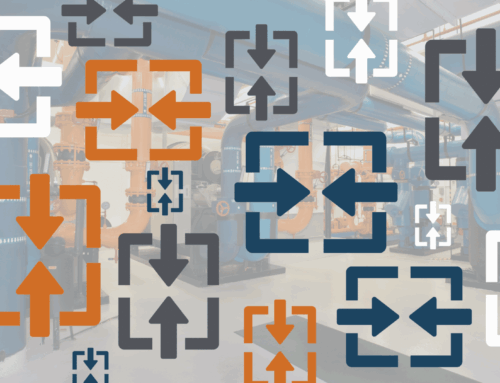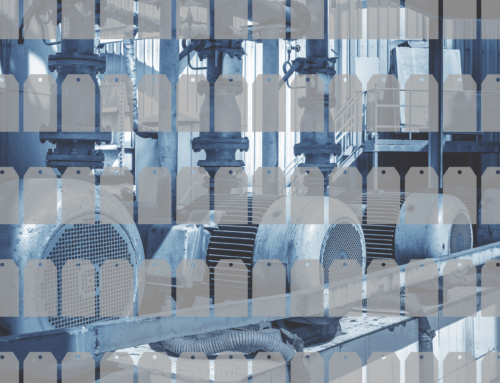When deciding whether to implement a new technology, it doesn’t take long before someone brings up the question:
What is the ROI?
Return on Investment (ROI) is a simple formula: net income divided by net investment. The larger the value, the larger the benefit of the investment. Though a simple formula, developing and understanding the ROI for new technology implementation goes beyond numbers and requires an understanding of the value and context of the solution and your role in its success.
1. VALUE
When evaluating a software tool like a predictive maintenance (PdM) solution, speak with the solution provider about the benefit and value other users have experienced and what you should expect. You want to discuss validated benefits and value from actual users. With validated value, you’re discussing a full implementation decision. With unvalidated potential value, you’re discussing a proof of concept decision. In the predictive maintenance space, there are solutions with proven records of identifying potential and hidden failures. This gives organizations time to plan and keep the equipment up and running. By having a clear expectation of what to expect once implemented, you’ll be better able to calculate your net income. This will ensure your decision-making process focuses on a potential new reality, not just a dream.
2. CONTEXT
Second, you need to understand the general context of the proposed solution value. For example, for HanAra, one of our customers saved over $4.5 million in operation and maintenance costs in a little over 2 years after implementing our solutions. This represents significant savings and value. But how should an organization with one plant understand this value use case? This is where context becomes important. The customer savings of $4.5 million is from an organization with a Centralized Monitoring & Diagnostics Center monitoring multiple sites. As a result, the organization with one plant should not assume a one-to-one comparison, but rather use it as a frame of reference. When evaluating a software’s value, make sure you have a clear understanding of how it has been used by others so you can make more accurate assumptions of how the solution will provide value in your environment, your context, and your processes.
3. YOUR ROLE
Third, without a strategy and process in place, it will be difficult to convert your expected ROI into an actual ROI. Even if you have a PdM ROI range with the worst-case scenario and best-case scenario, your ROI is going to be zero if implementation is poor. Predictive maintenance tools can expand an organization’s maintenance strategy. However, for this to be effective the organization must determine how to incorporate the actionable intelligence into day-to-day operations. For example, when you receive an early warning of an equipment failure, what will your organization do with it? Who will investigate the issue and when? If no one does anything with the early warning, there is no benefit for the organization. As a result, beyond What is the expected ROI, an equally important question is:
How can we connect our people, our technology, and our strategy to create value?
Therefore, when calculating your expected ROI, you also need to think about how you will ensure the incorporation of the technology into your processes and members’ day-to-day. This may require iterating on strategies, adding training, and augmenting procedures. Don’t discount the role you and your organization play in the ability of technology to provide value.
What’s the Calculation?
Once you have a clear understanding of the value, context, and role, you should have a good idea of what the expected income for the new technology will be. The next part of the ROI formula is to calculate the net investment. The net investment will include upfront costs of the technology and the ongoing maintenance and operation costs. Check out our previous blog post on the total cost of ownership (TCO) for predictive analytics and data historians for some ideas. With both the expected income and investment, you’ll be ready to calculate your expected PdM ROI.
Continuous ROI Monitoring
Finally, ROI shouldn’t be a one-time question during the decision-making process. It should be an indicator that an organization monitors throughout the entire technology lifecycle. There are two reasons for this:
- A high PdM ROI can indicate a need for continuing services or resources dedicated to the technology. For example, additional upgrades or continued maintenance and support (M&S) make sense when you can easily show the value of the technology for your organization.
- A low PdM ROI can indicate that you need to change your internal processes or look for a different solution. For internal processes, have you set your members and the technology up for success? Do the right people have access to the technology and have they been properly trained? After internal evaluation, if you determine that the technology is not a good fit, don’t fall into the sunk cost trap. Once in production, if the solution does not provide the desired results and you determine this is a shortcoming of the solution and not your strategy, look for something different. Just because a predictive maintenance tool didn’t provide value for you doesn’t mean all predictive maintenance tools won’t provide value.
Next Steps
At HanAra, we’re happy to discuss with you the challenge you’re trying to overcome and what that new reality may look like.
To learn more about how our customers improve their decision-making process with our data historian HanPrism and predictive maintenance solution HanPHI, follow our LinkedIn page and reach out!






